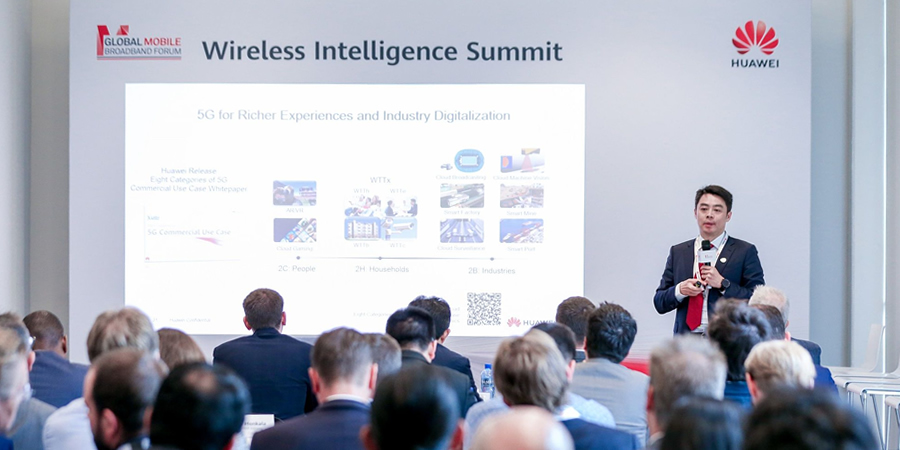Huawei released the 4G/5G FWA Broadband White Paper at the 10th Global Mobile Broadband Forum. Fixed wireless access (FWA) enables fixed broadband connections by leveraging wireless networks.
Rapid advancements in 4G and 5G enable high bandwidth and huge capacity in wireless connections, with significantly reduced per-GB costs.
This makes up to Gbps broadband experience possible over wireless networks, propelling FWA into the era of Wireless Fiber.
This white paper begins with the development and challenges associated with home broadband, followed by a short overview of the five main advantages of Wireless Fiber over fixed broadband in achieving "Broadband for All" and bridging digital divides.
Wireless Fiber solutions are presented, and related network planning and evolution schemes are outlined, along with regulatory suggestions on how to improve broadband connections. FWA success stories are also provided.
Widespread Commercial Adoption of 4G FWA: A Foundation for 5G FWA Business Success
To date, 4G FWA solutions have been put into operation on more than 230 networks across 120 countries, providing services to over 100 million households.
4G FWA user bases are growing rapidly, with more 4G FWA than fixed broadband users developed in 2018 in markets outside China.
Currently, 4G FWA is widely used to enable services to those previously without connections, in addition to delivering xDSL acceleration and fiber-like experiences. As a result, those users previously lacking access to digital services can now avail of broadband services below 10 Mbps, while previous xDSL users enjoy data rates increased to 20–50Mps, and fiber-like services reach speeds of over 100Mps.
With 5G development accelerating, 5G FWA is making it possible to improve the Gbps user experience needed for smart homes, 4K, and AR/VR services, as well as improving access for small and medium-sized enterprises (SMEs).
Operators now have more tools at their disposal for achieving rapid growth and business success through 4G/5G FWA.
Broadband for All: Challenges
A recent International Telecommunication Union (ITU) report concluded that the proportion of households with access to the Internet in developed countries is 1.7 times that in developing countries. However, only 17.8% of households can access the Internet in the least developed countries.
By the end of 2019, 50% of the world's population will still be unable to connect. In addition, variations in broadband speeds are common between different regions.
In most developing countries, fixed broadband rates are often below 20 Mbps, even dipping below 10 Mbps in some countries.
Broadband penetration is crucial for bridging digital divides and improving economic development in developing and underdeveloped countries. According to the World Bank, a 10% increase in broadband penetration will raise GDP by 1.3% on average, while also increasing global employment by 3%.
Fixed broadband still faces a number of challenges in enabling rural broadband services, increasing copper-line transmission speeds, maintaining broadband affordability, and ensuring competitiveness. Therefore, a number of obstacles need to be overcome before "Broadband for All" can be achieved.
Wireless Fiber: Unique Advantages to Deliver "Broadband for All"
- Full Connection: Wireless broadband expands coverage and accessibility to more than 90% of the population, including those in both urban and rural areas.
- Fiber-like experience: 4.5G and 5G are used to ensure up to Gbps wireless broadband experience.
- Fast deployment and short ROI: Wireless broadband does not require digging trenches, routing cables, or obtaining site use permissions. Service deployment can be completed within a single day. ROI is generally less than three years, and on-demand network construction is allowed.
- Service flexibility: The natural advantage of wireless networks in terms of service flexibility enables operators to offer both prepaid and postpaid packages based on experience requirements among different groups.
- 5G-oriented evolution: Modernized wireless network devices ensure the hardware capabilities required for transition to 5G NR, enabling operators to mitigate investment risks while preparing for 5G.
Wireless Fiber is reshaping home broadband and becoming a replacement for optical fiber, enabling households and SMEs to access high-speed Internet services without the need for fiber-optic connections to quickly enter the digital world.
It will be available to everyone, changing the way we live and work in the digital world.
